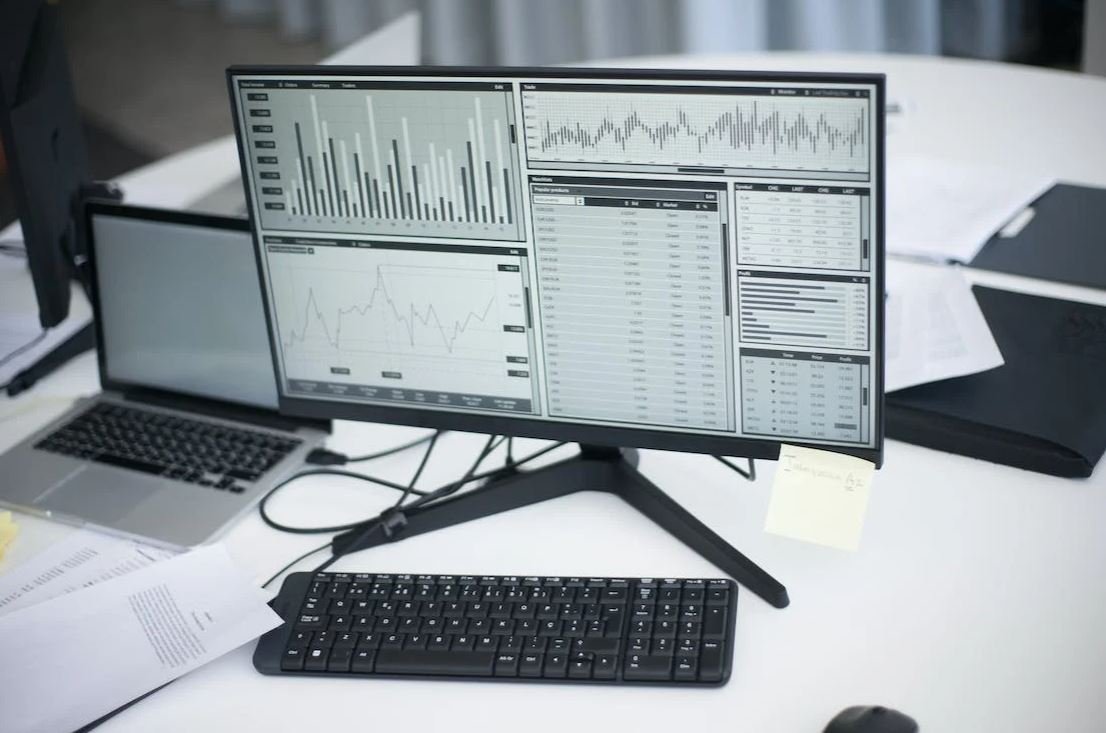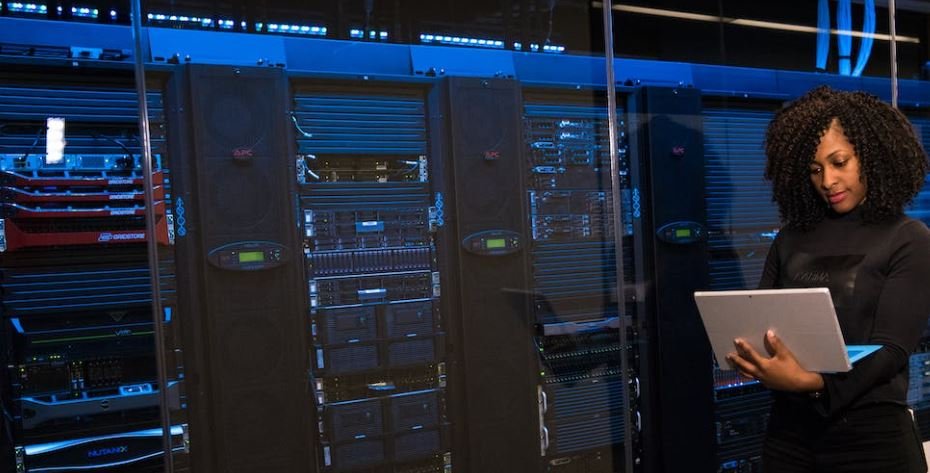AI Application to See the World and Make Sense of It
Artificial Intelligence (AI) is rapidly transforming various industries, and one of the most fascinating applications is its ability to perceive and understand the world. Through advanced algorithms and deep learning techniques, AI can ‘see’ images, videos, and sensor data, and make sense of the information it receives. This article explores the groundbreaking advancements in AI that enable machines to see the world and interpret it with human-like understanding.
Key Takeaways:
- AI can perceive and comprehend the world through advanced algorithms and deep learning techniques.
- Machines equipped with AI can ‘see’ images, videos, and sensor data.
- The ability to make sense of the visual data allows AI to assist in tasks such as object recognition, surveillance, and autonomous driving.
- AI-powered visual recognition systems have the potential to enhance efficiency, accuracy, and safety across various industries.
AI’s ability to analyze visual data has revolutionized several sectors, including healthcare, transportation, and security. In healthcare, AI algorithms can analyze medical images, aiding in early detection and diagnosis of diseases. *Imagine a computer system that can quickly and accurately identify cancerous cells in an MRI scan, potentially saving lives with its efficiency.* In the transportation sector, AI enables self-driving cars to perceive the environment through cameras, lidar, and other sensors. *Autonomous vehicles can interpret traffic signals, road conditions, and pedestrian movements, making informed decisions while ensuring safer journeys.*
AI-powered visual recognition systems rely on computer vision, a field that encompasses the science of teaching computers to see and understand visual information. Machine learning algorithms extract features and patterns from images, enabling the system to recognize objects, scenes, and even emotions. This technology forms the backbone of various AI applications, ranging from facial recognition to content moderation on social media platforms. *By understanding the context of a scene or the sentiment expressed in an image, AI can assist in making decisions or provide valuable insights.*
The Power of AI in Visual Understanding
One remarkable aspect of AI in visual understanding is its ability to process vast amounts of data rapidly. Through deep learning techniques such as Convolutional Neural Networks (CNNs), AI models can learn hierarchical representations of visual data, mimicking the way the human visual cortex processes information. This allows AI to recognize complex patterns, such as fine-grained details in images or even human emotions from facial expressions. *AI can decipher intricate visual information that may elude human observers, leading to new discoveries and insights.*
AI-powered visual recognition systems have proven their worth in various domains. In surveillance and security, AI algorithms can identify suspicious activities or persons by analyzing video feeds from cameras. This technology enhances public safety by alerting authorities to potential threats in real-time and reducing the burden on human security personnel. AI also plays a vital role in content moderation, helping social media platforms detect and remove inappropriate, harmful, or spam content from user-generated uploads. *AI helps maintain a safer digital environment by recognizing and filtering problematic content more effectively than manual moderation.*
Table 1: AI Applications Based on Visual Understanding
| Industry | AI Visualization Application |
|---|---|
| Healthcare | Disease detection and diagnosis from medical images |
| Transportation | Autonomous vehicles for enhanced safety and navigation |
| Security | Surveillance for threat detection and prevention |
As the field of AI continues to advance, researchers are exploring more sophisticated techniques to enhance visual understanding. Generative Adversarial Networks (GANs), for example, allow AI to generate realistic images and even hallucinate missing details in existing ones. This technology has implications in fields like entertainment, art, and design. By automating the creative process, AI can potentially assist artists and designers in visualizing their ideas, saving time and effort. *Imagine an AI-driven design tool that can transform rough sketches into detailed, professional artwork, providing inspiration and guidance to creators.*
Moreover, the deployment of AI in visually impaired assistance and accessibility applications is gaining traction. AI-powered systems, equipped with cameras and sensors, can ‘see’ the environment and provide audio cues or haptic feedback to visually impaired individuals, enabling them to navigate safely. *With AI assistance, the visually impaired can gain more independence and explore the world with a heightened sense of awareness.*
Table 2: Advancements in Visual Understanding Techniques
| Technology | Application |
|---|---|
| Convolutional Neural Networks (CNNs) | Object recognition, scene understanding |
| Generative Adversarial Networks (GANs) | Image generation, detail hallucination |
| Visual Impairment Assistance | Environment perception, navigation support |
The continuous advancement of AI in visual understanding opens up new possibilities and applications. In fields as diverse as healthcare, transportation, security, and accessibility, AI has the potential to significantly enhance efficiency, accuracy, and safety. As researchers delve deeper into the realm of visual perception, breakthroughs are inevitable, leading to even more remarkable AI-powered applications in the future. *The rapid progression of AI in visual understanding promises a future where machines can perceive and make sense of the world with astonishing precision and insight.*
Table 3: Potential Benefits of AI in Visual Understanding
| Industry | Potential Benefits |
|---|---|
| Healthcare | Early disease detection, accurate diagnosis |
| Transportation | Improved road safety, reduced accidents |
| Security | Enhanced threat detection, real-time monitoring |
| Accessibility | Greater independence for visually impaired individuals |
AI-powered visual understanding has already revolutionized various industries, and its potential continues to expand. With ongoing research and technological advancements, AI will undoubtedly redefine our perception of the world, enabling machines to ‘see’ and interpret visual information with unprecedented accuracy and insight. This exciting frontier of AI promises a future where our technological creations possess an ever-increasing understanding of the world around us, leading to endless possibilities and applications.

Common Misconceptions
Misconception 1: AI can see the world and understand it like humans do
One common misconception about AI applications to see the world and make sense of it is that they can perceive and comprehend the world in the same way as humans. However, AI systems lack the richness of human perception and understanding. They rely on algorithms and data analytics to analyze patterns and make sense of the information they receive.
- AI systems perceive the world through sensors, cameras, or other data sources rather than through human-like senses.
- AI systems prioritize data-driven decision-making rather than relying on intuition or emotions.
- AI systems may have limitations in interpreting contextual information or understanding nuanced human experiences.
Misconception 2: AI can always accurately interpret and predict human behavior
Another common misconception is that AI applications can accurately interpret and predict human behavior. While AI algorithms can analyze vast amounts of data to identify patterns and trends, they cannot predict individual behaviors with absolute certainty.
- AI can analyze historical data to make probabilistic predictions about human behavior, but individual choices may still deviate from those patterns.
- AI algorithms may be biased or limited by the data they are trained on, leading to inaccurate predictions or skewed interpretations.
- AI cannot fully account for unpredictable factors or human agency in decision-making.
Misconception 3: AI is replacing human perception and understanding
One prevalent misconception is that AI is replacing human perception and understanding in various domains. While AI can augment and support human capabilities, it cannot entirely substitute the complexity and depth of human perception and understanding.
- AI systems complement human perception by processing large amounts of data and identifying patterns that humans may miss.
- Human judgment, intuition, and creativity are essential in interpreting and making sense of the insights generated by AI systems.
- AI systems heavily rely on human-generated data and instructions for training and improvement.
Misconception 4: AI is infallible and unbiased
Another misconception is that AI systems are infallible and completely unbiased in their decision-making. However, AI algorithms and systems can inherit biases present in the data they are trained on and the algorithms programmed by humans.
- AI algorithms can perpetuate and amplify existing societal biases if not properly designed, monitored, and evaluated.
- AI systems do not possess ethical reasoning abilities and may make decisions that are ethically questionable without human oversight.
- Addressing bias and ensuring fairness requires ongoing efforts to mitigate algorithmic biases and incorporate diverse perspectives into the development process.
Misconception 5: AI has comprehensive knowledge of the world
Lastly, there is a misconception that AI has comprehensive knowledge of the world and can provide accurate and complete information on any topic. In reality, AI systems possess limited knowledge and rely heavily on the data they have been trained on.
- AI systems are proficient in specific domains where they have been trained, but may struggle when faced with unfamiliar or ambiguous situations.
- AI systems may generate plausible but incorrect or misleading information if they lack sufficient training data or contextual understanding.
- Continuous learning and updating of AI models are necessary to ensure accuracy and relevance in an ever-changing world.

Introduction
Artificial intelligence (AI) has revolutionized various industries, including healthcare, finance, and transportation. Over the years, AI applications have grown more sophisticated, enabling machines to perceive and understand the world around them. In this article, we explore ten fascinating examples of AI applications that allow machines to see and make sense of the world.
AI in Autonomous Vehicles
Autonomous vehicles rely on advanced AI algorithms to analyze real-time data from sensors, cameras, and lidar systems. By processing this information, these vehicles can navigate complex road networks, avoid obstacles, and make informed decisions to ensure passenger safety.
AI for Medical Diagnosis
AI-assisted medical diagnosis algorithms use image recognition techniques to analyze medical images such as X-rays, MRIs, and CT scans. This technology helps doctors in detecting and diagnosing various diseases like cancer, tuberculosis, and cardiovascular issues with high accuracy.
AI for Facial Recognition
Facial recognition technology powered by AI algorithms can accurately identify individuals by matching their facial features against a vast database of images. This application is used by law enforcement agencies, airports, and in smartphones for secure biometric authentication.
AI in Agriculture
AI-powered drones and robots assist farmers in monitoring crop health, identifying pest infestations, and optimizing irrigation schedules. These technologies enable precise and efficient farming practices, resulting in improved crop yields and reduced environmental impact.
AI for Natural Language Processing
Natural Language Processing (NLP) enables machines to understand and interpret human language. AI-powered chatbots, virtual assistants, and language translation services heavily rely on NLP algorithms to communicate effectively with users.
AI for Financial Trading
AI algorithms analyze vast amounts of financial data, news articles, and market trends to make informed predictions and suggestions for stock trading. This technology helps traders identify potential investment opportunities and manage risks more efficiently.
AI in Video Surveillance
AI-based video surveillance systems incorporate advanced image recognition and behavioral analysis algorithms to identify security threats and suspicious activities in real-time. These systems enhance public safety and aid in preventing crime.
AI for Environmental Monitoring
AI-powered sensors and monitoring systems help gather and analyze environmental data, such as air quality, water pollution levels, and climate parameters. This information assists in understanding and mitigating environmental issues.
AI in Virtual Reality
AI algorithms enhance the immersiveness of virtual reality experiences by dynamically rendering and adapting virtual environments based on user interactions and preferences. This technology enables more realistic and interactive virtual worlds.
Conclusion
The applications of AI to see and make sense of the world are continually expanding, leading to advancements in various sectors. From autonomous vehicles to medical diagnosis and environmental monitoring, AI is transforming our world. As AI continues to evolve, we can expect even more innovative applications that enhance our understanding of the world around us.
Frequently Asked Questions
How does artificial intelligence (AI) enable machines to see and understand the world?
What are some practical applications of AI’s ability to see and make sense of the world?
How can AI systems recognize and classify objects in images or videos?
What is the role of deep learning in AI’s ability to see and understand the world?
Can AI systems understand visual context and make inferences based on it?
What are some challenges faced by AI systems in perceiving and understanding the world?
How does AI contribute to advancements in augmented reality (AR) technology?
Are there any ethical considerations concerning AI systems’ ability to see and interpret the world?
How can AI systems be trained to improve their ability to perceive and understand the world?
What is the future potential of AI’s ability to see and make sense of the world?





